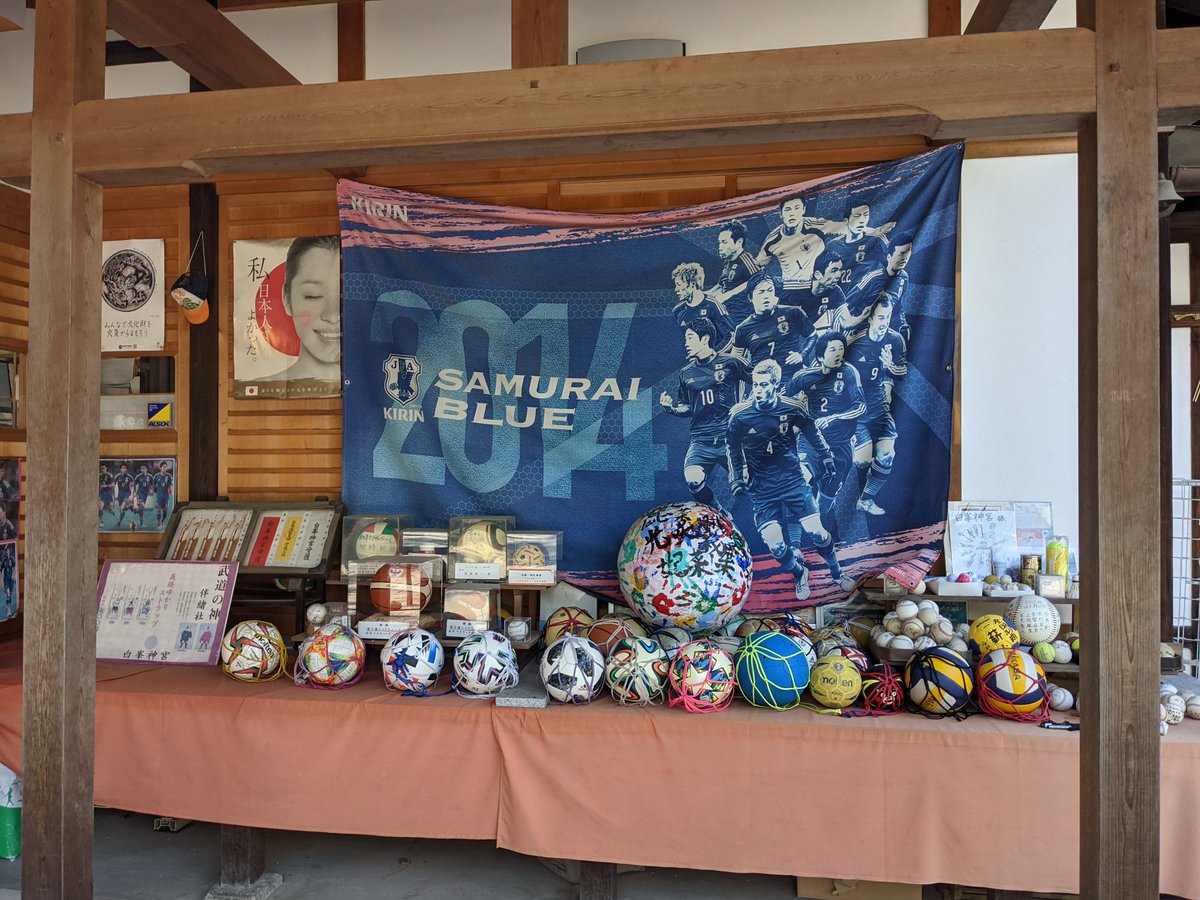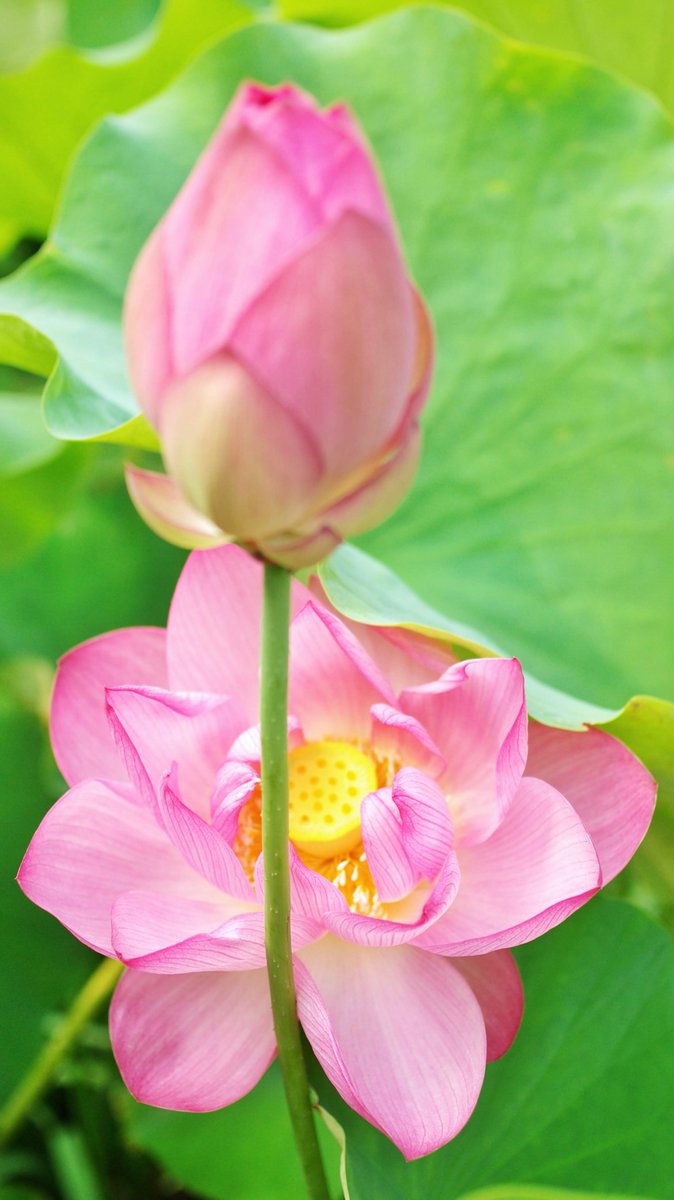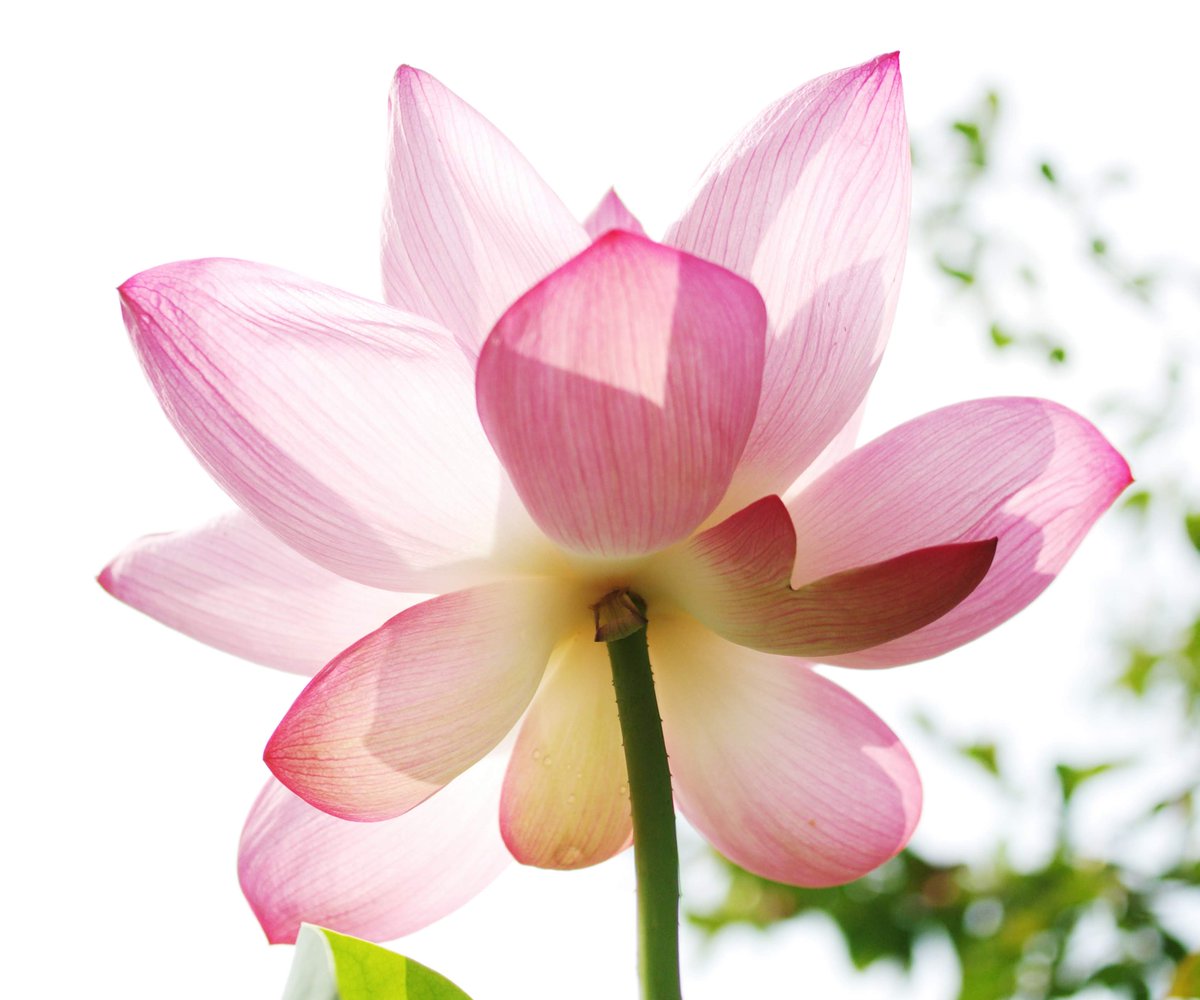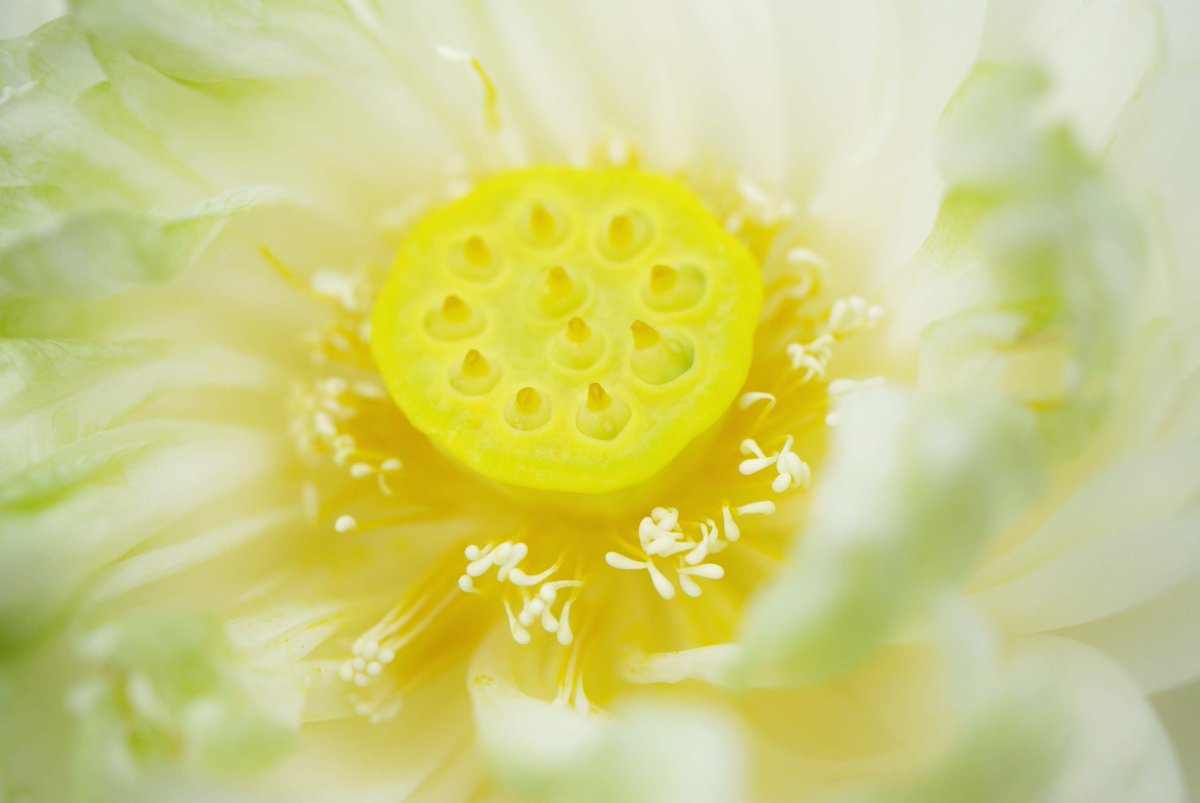
🐸😼FROLICKING ANIMALS & AN ANCIENT TEA FIELD🍵🌿
The Chōjū-jinbutsu-giga (鳥獣人物戯画), a set of four scrolls depicting anthropomorphic animals, is considered by many -though it features no words- to be the earliest form of manga (漫画) in Japan.
#Kyoto #Japan #京都 #folklore



The Chōjū-jinbutsu-giga (鳥獣人物戯画), a set of four scrolls depicting anthropomorphic animals, is considered by many -though it features no words- to be the earliest form of manga (漫画) in Japan.
#Kyoto #Japan #京都 #folklore




Kōzan-ji's (高山寺) precious Chōju-jinbutsu-giga (鳥獣人物戯画 'Scrolls of Animals Frolicking as Humans') gently makes fun of religion, the court, and the human condition. Monks and nobles are depicted as rollicking rabbits, frogs, monkeys, cats & other animals.
#Kozanji #高山寺



#Kozanji #高山寺




The 4 scrolls are thought to have been created by the artist-monk Toba Sōjō (鳥羽僧正 1053–1140), though the 3rd & 4th (in notably different styles) may well date to the 13thC.
Certainly Toba completed paintings very similar in style during his lifetime.
#folklorethursday #Japan



Certainly Toba completed paintings very similar in style during his lifetime.
#folklorethursday #Japan
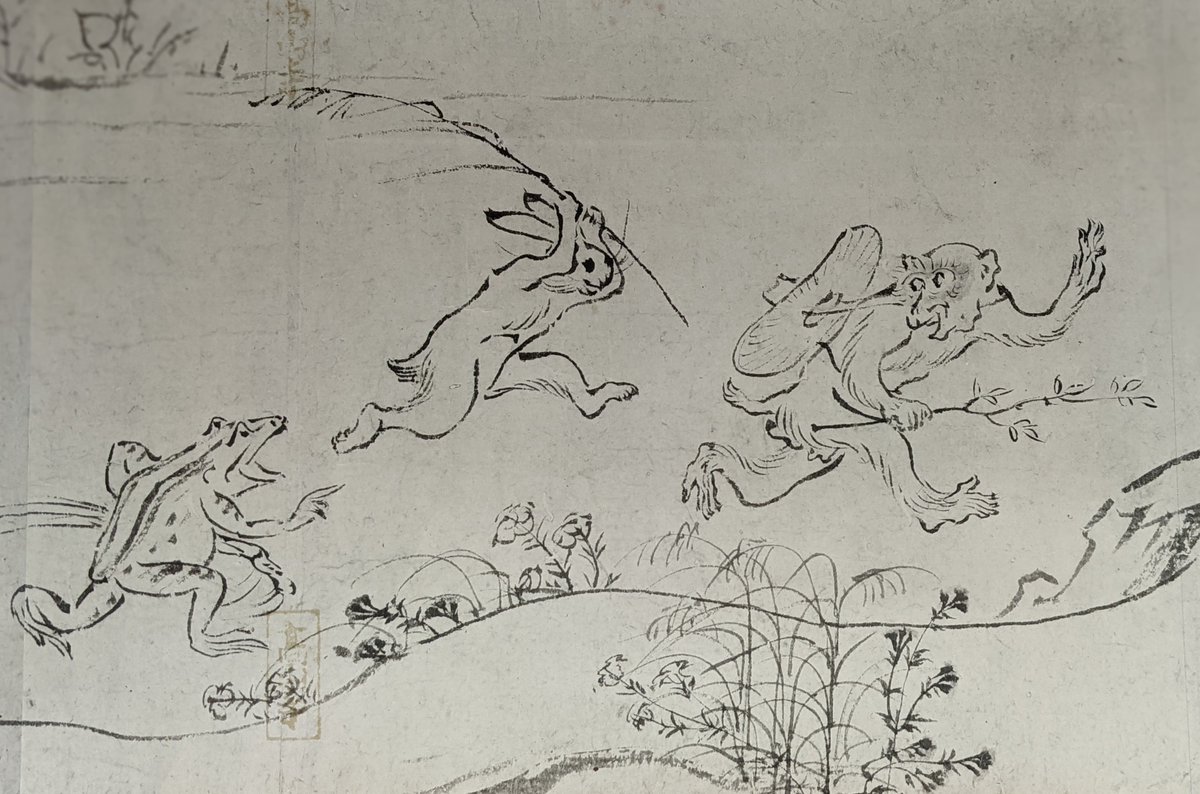
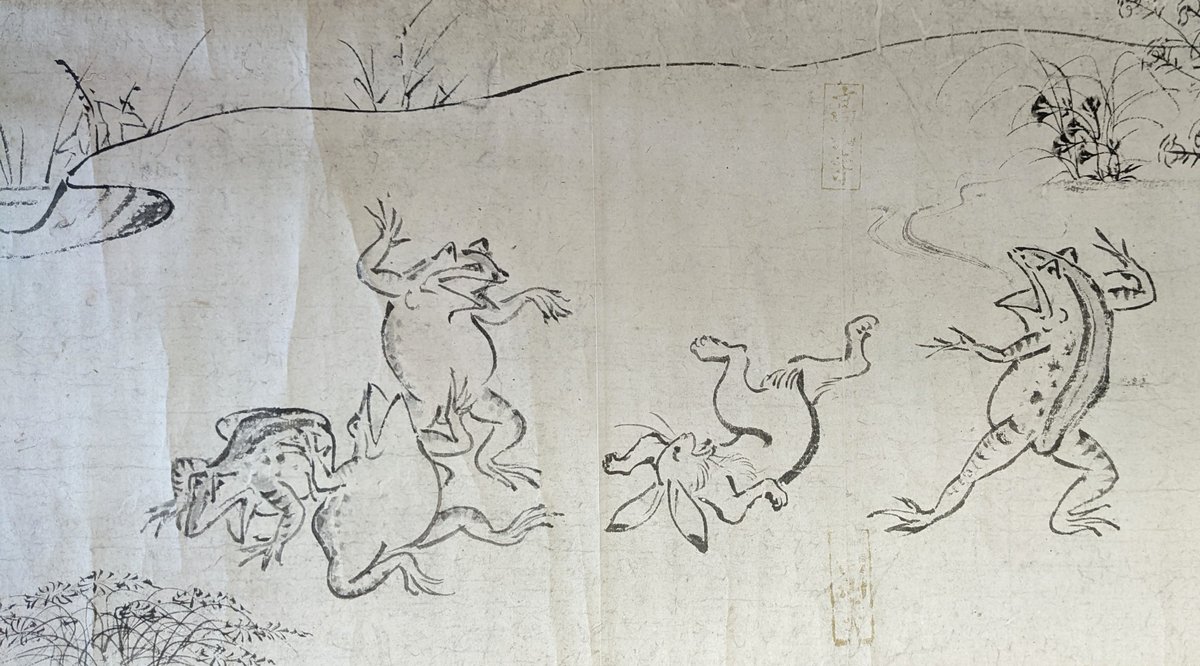

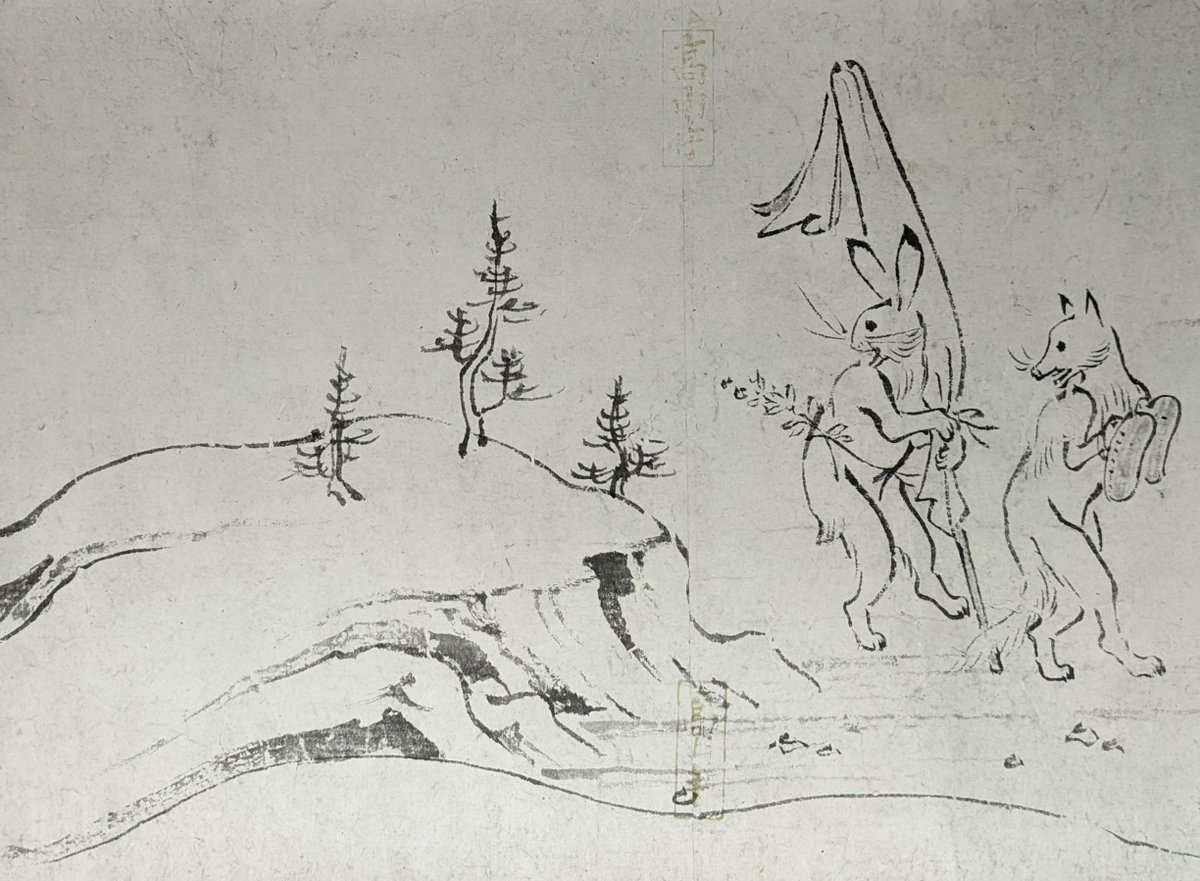
Toba Sōjō (鳥羽僧正 the 'Bishop of Toba'), aka Kakuyū (覚猷), was the son of Minamoto-no-Takakuni (源隆国 1004–77).
In 1138 he rose to become 48th head of the Tendai sect. Known as a talented artist, he lived at Shō-kongō'in (証金剛院) in Toba, Kyōto.
#Kyoto #Japan #manga #京都



In 1138 he rose to become 48th head of the Tendai sect. Known as a talented artist, he lived at Shō-kongō'in (証金剛院) in Toba, Kyōto.
#Kyoto #Japan #manga #京都




While many credit the set of drawings as Japan's oldest work of manga (漫画), artist Hosokibara Seiki (細木原青起) suggested this title should go to the late 12thC Shigisan-engi (信貴山縁起 'Legend of Mount Shigi’).
The scroll depicts the miracles of the monk Myōren (命蓮).



The scroll depicts the miracles of the monk Myōren (命蓮).




The Shigisan-engi (信貴山縁起) is divided into 3 scrolls:
1) Myōren makes a granary fly!
2) Myōren heals the emperor.
3) Myōren is reunited with his sister.
This thread is all about Shigi-san, Chōgosonshi-ji (朝護孫子寺), and its connection to tigers🐅⬇️




1) Myōren makes a granary fly!
2) Myōren heals the emperor.
3) Myōren is reunited with his sister.
This thread is all about Shigi-san, Chōgosonshi-ji (朝護孫子寺), and its connection to tigers🐅⬇️
https://twitter.com/camelliakyoto/status/1499567176600023041?s=20&t=v9nW1LQaqXca75pnMA_IxA
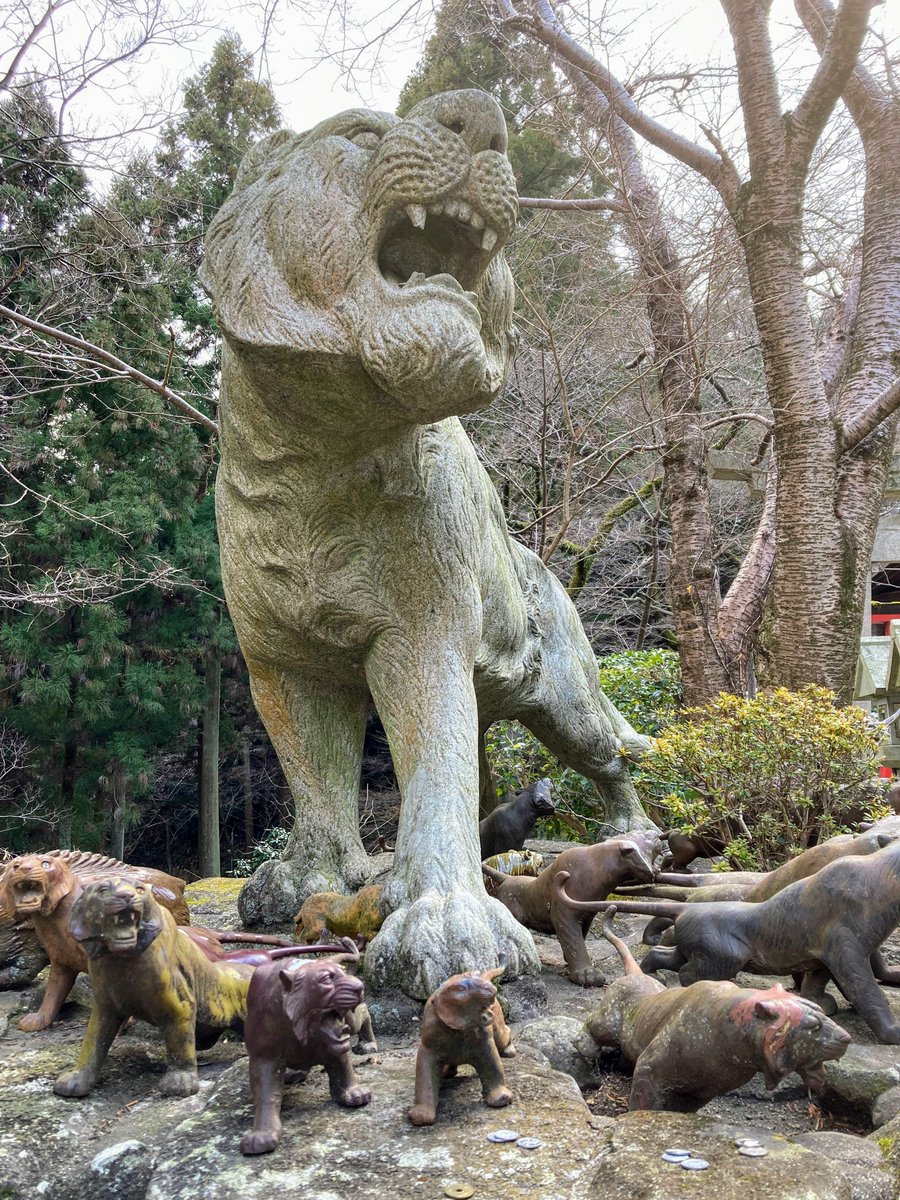



The first of the Chōju-jinbutsu-giga's 4 scrolls is the longest (11m) and largest (30cm wide).
It opens with rabbits and monkeys bathing in a lake, moving forward to preparations for an archery event, a small festival, dancing, wrestling, a funeral, and prayers to a Frog Buddha.



It opens with rabbits and monkeys bathing in a lake, moving forward to preparations for an archery event, a small festival, dancing, wrestling, a funeral, and prayers to a Frog Buddha.



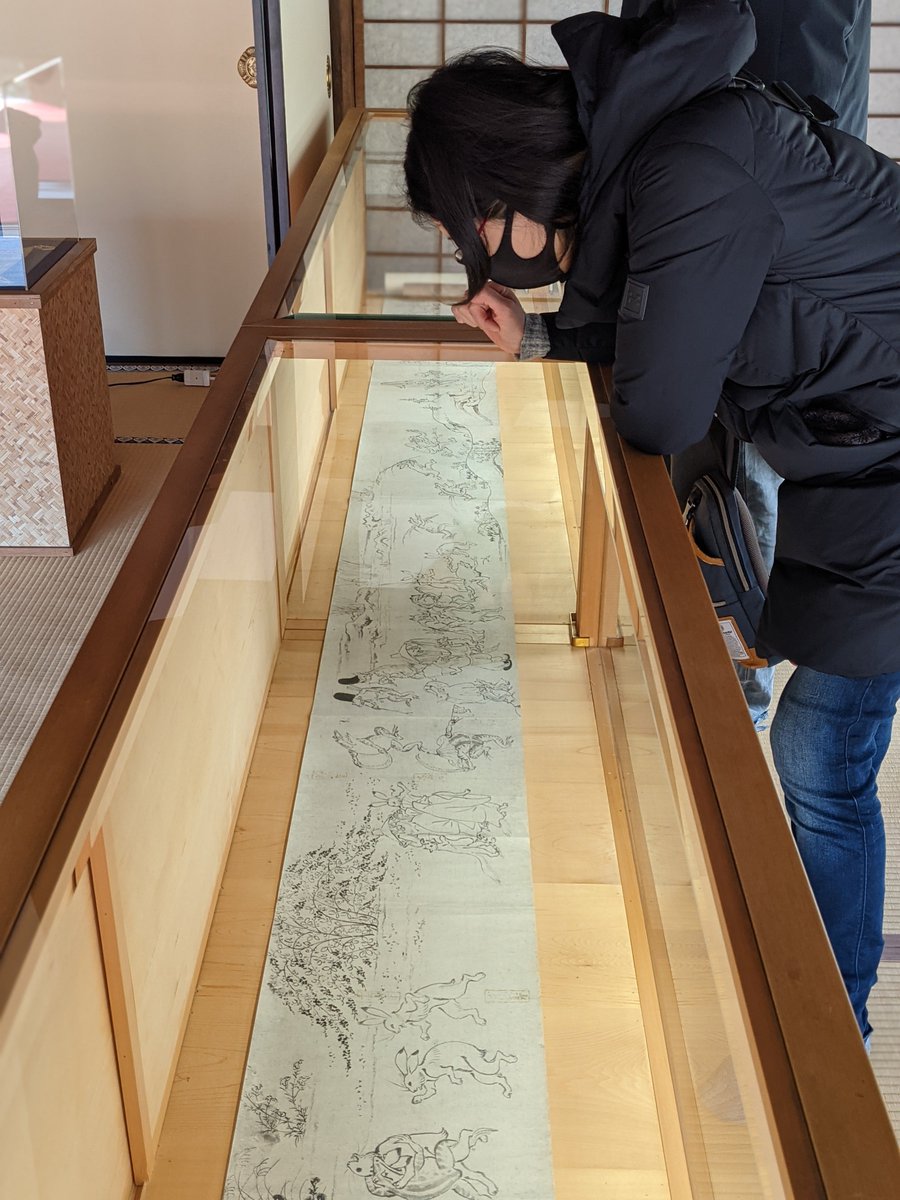
Visitors to Kōzan-ji (高山寺) are often disappointed that the temple displays only a replica of the scrolls.
The real Chōjū-jinbutsu-giga are kept at Kyōto and Tōkyō National Museums.
Luckily there are many other reasons to visit Kōzan-ji (高山寺)☺️
#folklorethursday #Kyoto



The real Chōjū-jinbutsu-giga are kept at Kyōto and Tōkyō National Museums.
Luckily there are many other reasons to visit Kōzan-ji (高山寺)☺️
#folklorethursday #Kyoto




🌿THE BIRTHPLACE OF TEA🍵
Infused tea had been drunk as early as the 8thC in Japan, when it was considered an exotic delicacy and a miracle drug. There are records of plantations in Kyūshū and even on Mt Hiei in Kyōto, but before long it had once again fallen from favour.
#Kyoto



Infused tea had been drunk as early as the 8thC in Japan, when it was considered an exotic delicacy and a miracle drug. There are records of plantations in Kyūshū and even on Mt Hiei in Kyōto, but before long it had once again fallen from favour.
#Kyoto
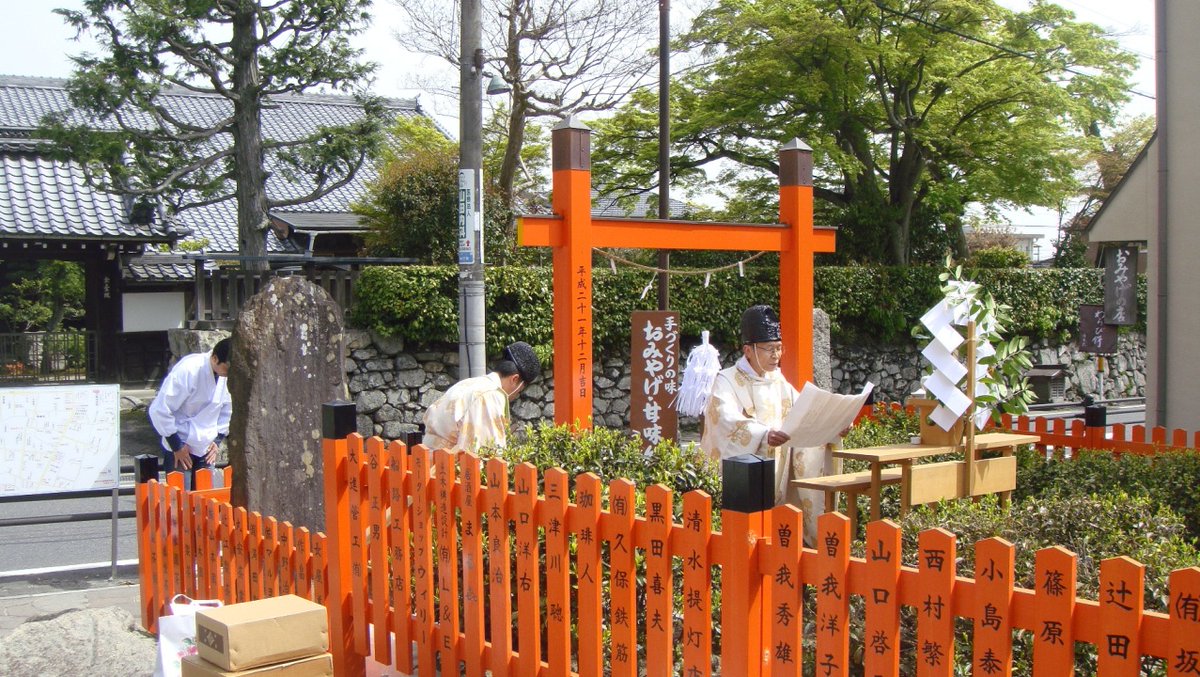



The Zen monk Yōsai (明菴栄西) first brought the methods of preparing powdered tea to Japan from Sung Dynasty China in 1191.
He had seen how popular tea drinking was amongst the Zen monasteries and society at large, and hoped to promote it as a medicine and life-prolonging elixir!



He had seen how popular tea drinking was amongst the Zen monasteries and society at large, and hoped to promote it as a medicine and life-prolonging elixir!




Yōsai (明菴栄西) took the tea seeds to his friend Abbot Myōe (明恵 1173–1232), who had helped rebuild Kōzan-ji (高山寺) in NW Kyōto. On the mountain slopes of Toganoo (度賀尾) Myōe established a tea 'garden'.
It survives to this day, & is known as the birthplace of tea in Japan.



It survives to this day, & is known as the birthplace of tea in Japan.




Myōe's experiment was a huge success, and little by little tea drinking would spread beyond Zen temples.
Toganoo's forested slopes, colder climate and limited space ultimately made it necessary to move tea growing to Uji (the heart of matcha production even today).
#Japan #Kyoto



Toganoo's forested slopes, colder climate and limited space ultimately made it necessary to move tea growing to Uji (the heart of matcha production even today).
#Japan #Kyoto




In that typically Kyōto way, Kōzan-ji makes sure to let visitors know (in a slightly passive aggressive whisper) that it remains the spiritual home of tea.
Tea grown in Toganoo was called 'true tea' (本茶 'hon-cha'), whereas all other teas were known as 'non tea' (非茶 'hi-cha').



Tea grown in Toganoo was called 'true tea' (本茶 'hon-cha'), whereas all other teas were known as 'non tea' (非茶 'hi-cha').




In 1547 much of the temple and many of the tea fields were destroyed by Hosokawa Harumoto's (細川晴元) troops. Thanks to this event, and because Toganoo was unable to produce tea for many decades, Uji was also permitted to call its tea 'hon-cha' (本茶 'true tea').
#抹茶 #matcha
#抹茶 #matcha
• • •
Missing some Tweet in this thread? You can try to
force a refresh








